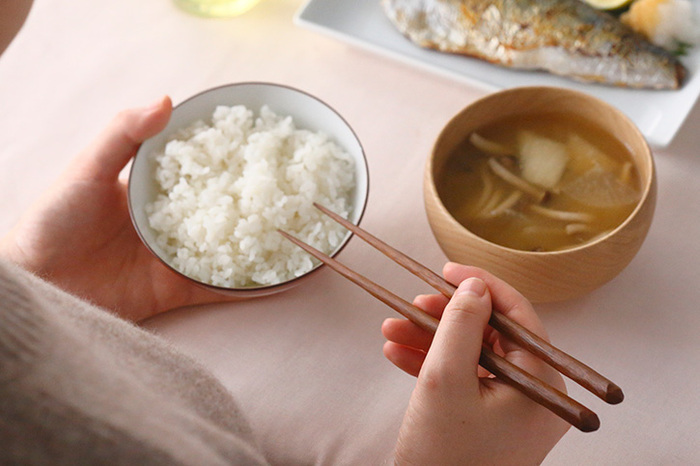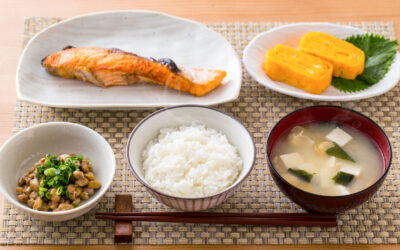It may seem that to eat with chopsticks alone is very difficult, but once you can get the hang of how to use, the barrier is easier to overcome than you might think. And most importantly, the benefits of using it are more than you might image.
Chopstick and Japanese
The Japanese are people who begin and end their lives with chopsticks. They use chopsticks for the first time 100 days after their birth in a ceremony called “Okuizome”, and then again and again at three meals a day, and at funerals, their bones are picked up with chopsticks. These for the Japanese are not only a daily necessity but also a very important tool rooted in their spirits.
Why called “Ohashi”?

Chopsticks are called “Hashi(箸)” or “Ohashi(お箸)” in Japan. The Japanese word “Hashi” has been used to refer to a tool that connects one to the other, such as “Hashi(橋)” which means a Bridge that connects an edge to the other, or “Hashigo(梯子)” which means a Ladder that the ground to the high. Chopsticks were no exception, which “Hashi had been meant to be sacred, connecting “Gods”, which reside in the head of chopsticks, and “Humans”, which reside in the tip. Hence, in the past, it had been believed that the gods resided in the chopsticks at eating.
Although the origin has never been revealed, it has been said that the first chopsticks appeared for emperor’s Shinto rituals in order to prevent him from touching food with his hands at offering it to their Gods, in ancient times when people still ate with their hands, and its shape was that of a single tree bent into tweezers.
It is said that the current style of two chopsticks were first used in the 7th century when Ono-no-Imoko and other envoys returned from China(Sui) and brought a lot of the Chinese culture which involved the chopstick-eating culture.
Only Chopsticks, Only Japan
Dividing the world into categories of eating utensils, 44% of the world is hand-eating culture, 28% is cutlery culture using knives and forks, and 28% is chopstick-eating culture using chopsticks, which area is widespread primarily in East and Southeast Asia, including Japan, Korea, China, Taiwan, Vietnam, Thailand, and Singapore. However, they are different from the use and shape by regions.
For example, in China, both chopsticks and a spoon are used at mealtime. The chopsticks are for rice and greens, while the spoon is for soup. And, It is an expression of friendliness to take food directly from the platter with the chopsticks using to serve themselves. It is made of wood, bamboo, and bone, and the most gorgeously crafted in the world. It is relatively long (27 cm) and almost the same thickness from head to tip.
In Japan, on the other hand, most meals are eaten by using only chopsticks, depending on the type of them. Soups, such as Miso soup, are eaten by holding the bowl in the hand and putting it directly on their mouths. Special chopsticks are provided as utensils for taking foods from the platter.
Furthermore, Japanese chopsticks are extremely versatile, using pure materials such as wood and bamboo, or elaborately finished with Maki-e or Urushi lacquer, and the most distinctive features is its shape, which is thin from head to tip gradually.
My Only Chopsticks
In this way, it is rare in the world for Japanese to eat meals with almost only chopsticks, and they have one more rare feature, which is that they have their own chopsticks, “My Ohashi”.
As mentioned above, it has been said that humans reside in the tip of them. In other words, chopsticks were their avatars to connect with Gods, so they could not share them with others.
Also, this has a great deal to do with the Japanese dish “Washoku” with many items cooked with various fishes and vegetables, which requires more delicate approaches to eat with good and beautiful manners.
To satisfy this requirement, it was desirable for them to be progressively shaped from the head to the tip. In addition to this, the Japanese have pursued them to fit the size, the feeling of their own hands, and their favorite color. As a result, chopsticks are now one of the major industries in Japan, especially in traditional crafts.

How to Use Chopsticks
In the case of eating the Washoku, how to use chopsticks is one of the most important factors. However, the Japanese who can use chopsticks correctly are not all and now decreasing, because the Japanese dishes have become more diverse. Instead, the demand may be increasing during non-Japanese people who has found the benefits of the Washoku.

One Action, the Other Fix
It is very easy to imagine that it is difficult for us to use chopsticks, because they require “Double” chopsticks for use by your “Single” hand, while western cutleries require 2 ones by both hands. Furthermore, the Washoku will send you a series of challenges, such as soybeans, even smaller grains of rice, soft tofu, and grilled fish that almost people cannot understand how to eat. But if you master the two tips we are about to describe below, it becomes easier for you to use chopsticks.
The first one is, you need only one chopstick to be active. When using Western cutleries, you move both at the same time. Therefore, we tend to think of chopsticks in the same way. However, in the case of them, the only one far from your body should be moved.
The chopstick that is to be active is held with the thumb, index, and middle fingers, while the other that is not to be fixed is held with the thumb and ring finger.
Like Holding a Pencil, But…
The second is, you need to hold the active chopstick like a pencil. Please refer to various places for information on how to hold a pencil. In this section, we describe the difference in the way to hold them.
The first major difference between chopsticks and a pencil is the position in which they are held. The position of holding the pencil is limited to between about 3-5 cm from the tip because the wrist holding the pencil is fixed to the desk. Chopsticks, on the other hand, are held two-thirds of their length from the tips.
The second one is how to move. In the case of a pencil, to facilitate adjustment of pressure on the paper, it is important to control by the index finger naturally, and the thumb and middle finger provide support to the index one. On the other hand, the action chopstick is controlled by the index and middle fingers and supported by the thumb.
In a little more detail, using the belly of the supporting thumb as a fulcrum, you lift the middle finger to open the chopsticks and lower the index one to close the chopsticks.
The following video, made by the Japanese chopstick dealer Seiwa, provides an easy-to-understand lecture and practice method. Many people have been able to understand and correct the way they hold their chopsticks through this video.
The 7+1 Common mistakes when using chopsticks
After you can master how to hold the chopsticks, you need to master the etiquette of using them. In particular, please always be aware of and avoid the wrong manners described below.
(1) Stabbing chopsticks: to stab food with chopsticks
(2)Passing chopsticks: to pass food over a bowl
(3)Dragging chopsticks: to use chopsticks to drag ware
(4)Tear chopsticks: to let food juices drip from the tip of chopsticks
(5)Picking chopsticks: to take food with chopsticks held by other people’s ones
(6)Straight chopsticks: to take food on the plate with your own chopsticks without using serving ones
(7)Standing chopsticks: to stand chopsticks in rice
Finally, there is one more mistake we have to add, which is “Licking chopsticks”. This means the gesture of licking something off your chopstick tips with your mouth and is very unseemly etiquette. To avoid this mistake, you should use the tip of the chopsticks as much as possible, or if something gets on the tip, you should take it off inside the bowl or casually dip it in the soup.
The Benefits of Using Chopsticks in Japanese Style
The Japanese are recognized as a long-lived and dexterous people, and this reality is said to be closely related to the use of chopsticks for Washoku.
Stimulating Your Brain
Since ancient times, chopsticks have been a versatile utensil with the basic functions of grasping, pinching, supporting, and carrying, as well as the specialized functions of cutting, tearing, unraveling, peeling, scooping, wrapping, loading, pressing, and separating in Japan.
These functions require so many actions of the human hand and fingers that are very stimulating to their brains. Using in childhood can promote brain development, and used in old age can decrease brain decline.
”The Hands are the Instrument of Man’s Intelligence”. This is the term by Dr. Maria Montessori who had advocated a method of education that was based on self-directed activity, hands-on learning and collaborative play.
In this method, the use of hands is one of the most important elements, which makes the brain work and develops a strong character. In Japan, chopsticks are chosen as one of the tools for using hands.
Keeping Your Body Beautiful
The delicate Washoku with using chopsticks can only bring a small amount of food to your mouth at a time. As a result, your eating should proceed slowly, and this should allow for moderate digestion.
Also, as you learn to use chopsticks better, your posture will inevitably improve. Good posture puts less pressure on your stomach, intestines, and other internal organs, aiding digestion and absorption.
And best of all, this is so easy to approach to Washoku, which also makes it possible to acquire various cooked fishes good for your body.
You can become a Hero or Heroine in Japan

©PR TIMES Washoku Miyasaka
Now that you have mastered the use and manner of chopsticks, go on a trip to Japan and try eating Washoku. You may be surprised to find that Japanese people, who are usually shy and reluctant to talk to you, will say to you,
“You can use chopsticks very well !”













